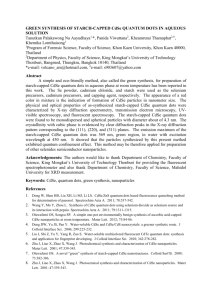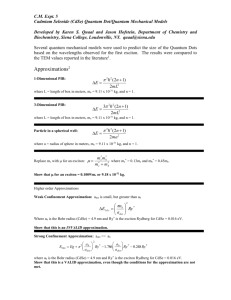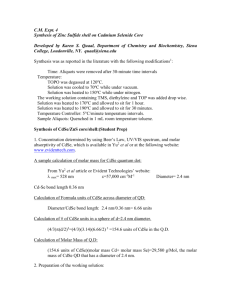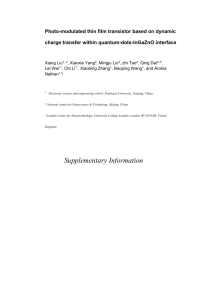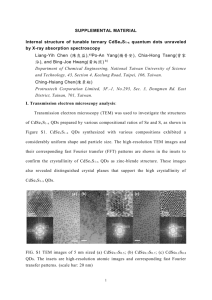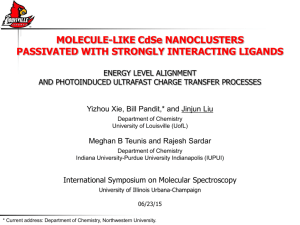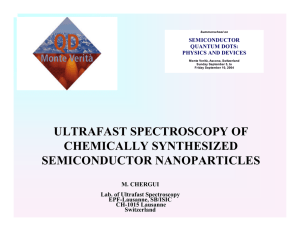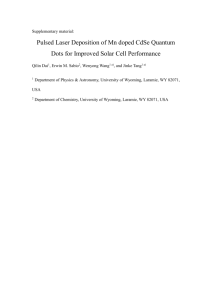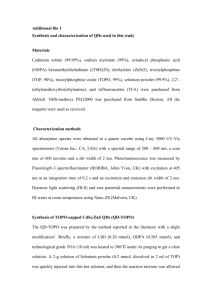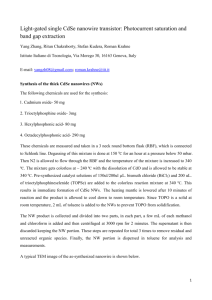Spontaneous Polarization-Induced Asymmetric
advertisement
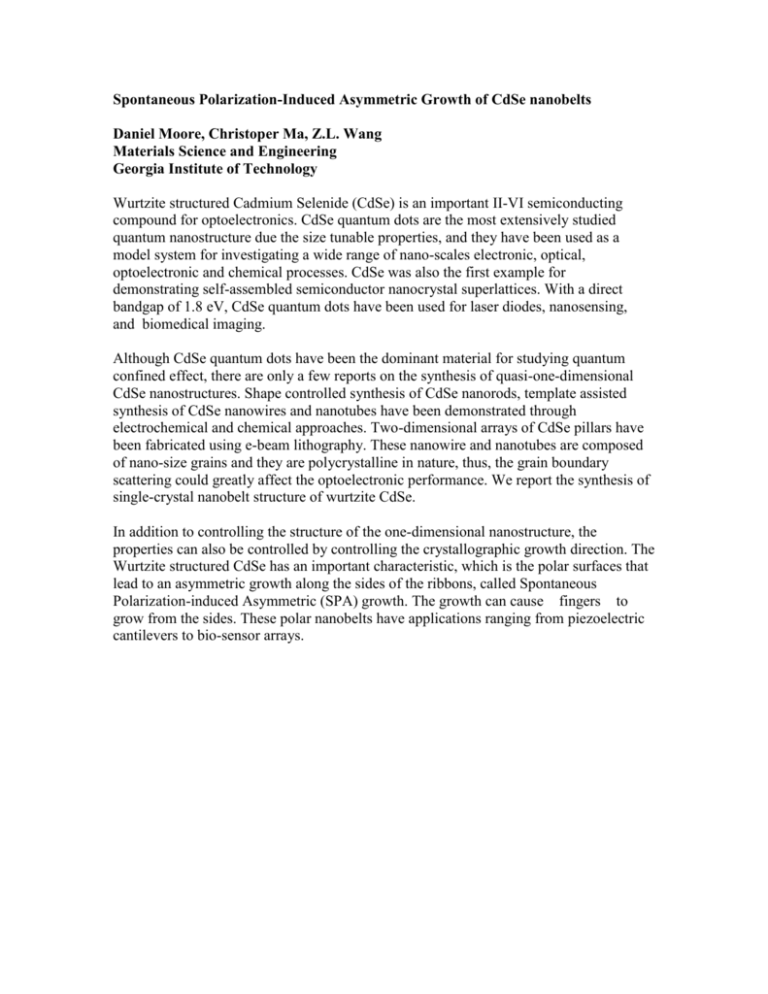
Spontaneous Polarization-Induced Asymmetric Growth of CdSe nanobelts Daniel Moore, Christoper Ma, Z.L. Wang Materials Science and Engineering Georgia Institute of Technology Wurtzite structured Cadmium Selenide (CdSe) is an important II-VI semiconducting compound for optoelectronics. CdSe quantum dots are the most extensively studied quantum nanostructure due the size tunable properties, and they have been used as a model system for investigating a wide range of nano-scales electronic, optical, optoelectronic and chemical processes. CdSe was also the first example for demonstrating self-assembled semiconductor nanocrystal superlattices. With a direct bandgap of 1.8 eV, CdSe quantum dots have been used for laser diodes, nanosensing, and biomedical imaging. Although CdSe quantum dots have been the dominant material for studying quantum confined effect, there are only a few reports on the synthesis of quasi-one-dimensional CdSe nanostructures. Shape controlled synthesis of CdSe nanorods, template assisted synthesis of CdSe nanowires and nanotubes have been demonstrated through electrochemical and chemical approaches. Two-dimensional arrays of CdSe pillars have been fabricated using e-beam lithography. These nanowire and nanotubes are composed of nano-size grains and they are polycrystalline in nature, thus, the grain boundary scattering could greatly affect the optoelectronic performance. We report the synthesis of single-crystal nanobelt structure of wurtzite CdSe. In addition to controlling the structure of the one-dimensional nanostructure, the properties can also be controlled by controlling the crystallographic growth direction. The Wurtzite structured CdSe has an important characteristic, which is the polar surfaces that lead to an asymmetric growth along the sides of the ribbons, called Spontaneous Polarization-induced Asymmetric (SPA) growth. The growth can cause fingers to grow from the sides. These polar nanobelts have applications ranging from piezoelectric cantilevers to bio-sensor arrays.
